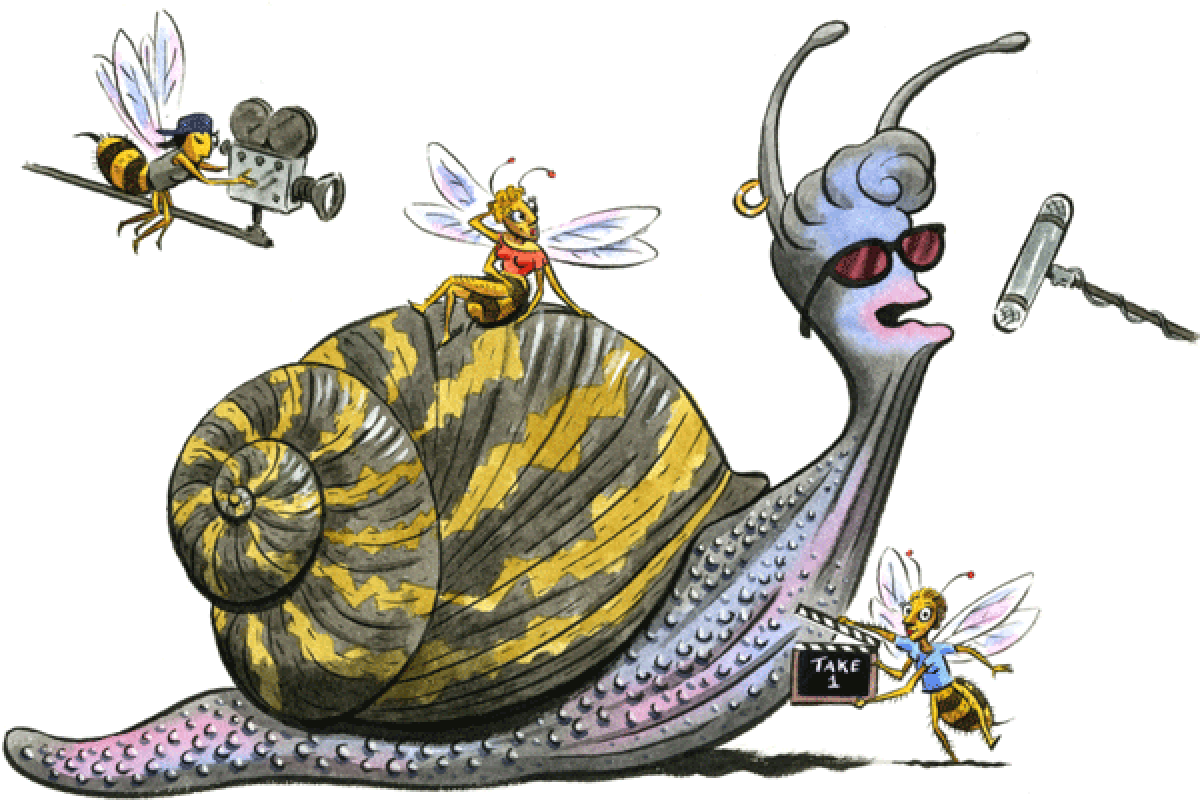Animals to Hollywood: Get it right

You may have heard of the Bechdel test. The idea, articulated in a cartoon drawn by Alison Bechdel, is that a movie isn’t worth watching if it doesn’t have 1) at least two female characters; 2) who talk to each other; and 3) about something other than men.
These seemingly modest requirements aren’t met by a surprising number of movies, which points to a troubling disconnect between the world as women experience it and the world portrayed in films. As a biologist, I see a similar disconnect between the way animals are portrayed in movies and the way they are in life.
Take this summer’s movie “Turbo,” which features a snail who yearns to win the Indy 500. Turbo got lukewarm reviews, but for me its real failing was that Theo, the hero, was male, along with virtually all the other characters, human and animal. In real life, snails are hermaphrodites, possessing both male and female sex organs. Now, I realize that the intricacies of gender identity were not the movie’s focus, but this kind of egregious error, and the many like it in fictional depictions of animals, have led me to construct my own version of the Bechdel test. I want to see movies about animals in which 1) the sexes are right for the species; 2) the taxonomy is correct; and 3) the setting is appropriate to the animal.
What would that mean?
Rule 1: Get the sexes right. This does not mean showing embarrassing details of every animal’s private parts, or even discussing sex at all. But I never want to see another movie about social insects like ants or bees that depicts them all as male. People, those ants trailing into the sugar bowl and the bees flitting from flower to flower in your garden are female. That’s right: all of them. The males of these insects exist only fleetingly, hanging out in the nest until it is time to mate. Soon afterward, whether or not they were among the few who actually got lucky with a future queen, they die. In most other animals, the sexes are evenly distributed, and females do more than just have babies. Showing a world in which all the major players are boy ants, or even boy penguins, is getting the world wrong in a very big way.
Rule 2: Avoid taxonomy failure. Taxonomy is the way living things are classified, and scientists, as well as a lot of other people, are very concerned about this. If your child calls a dog a cat, or a giraffe an elephant, you correct her. But if a rabbit is called a rodent in a movie, or a spider an insect, no one seems to care. To appreciate the magnitude of these mistakes, imagine a show in which someone called a chimpanzee a person, or vice versa. Unthinkable, right? But many of the common misidentifications are much more egregious. Entomologist Alex Wild has proposed a Taxonomy Fail Index, which scales the amount of error in such a misidentification against the error of confusing a human with a chimp, comparing how long it has been since the two creatures shared a common ancestor with how long we humans and chimpanzees have been separated. By that token, calling a yellow jacket a honeybee is more than 25 times worse than the chimp/human confusion.
Rule 3: Make the background match the animal. Penguins do not live in the Arctic, and macaws hail from South America, not Hawaii. All deserts do not look alike: The North American Mojave has rattlesnakes and creosote bushes, the Sahara has camels and acacia trees. When we homogenize them, making generic McDeserts, we lose the local essence that makes a place unique. And when parrots and plumerias appear in all depictions of places with warm climates, it gives the tropics a false and superficial sameness. Hawaii is not like Jamaica, and neither of them is like Cancun or the rainforest of Brazil. Putting a macaw on someone’s shoulder for a photograph in Waikiki makes only slightly more sense than posing him next to a polar bear.
It’s not that I want to be a scold. I don’t mind minor errors; I expect some poetic license; and I do get that fiction is not real. Talking animals, for example, are fine with me, and I thought the screeching gulls in “Finding Nemo” who called “Mine, mine!” absolutely nailed the basic personality of the seabirds. But movies shouldn’t get the most basic principles of animal life wrong. Think of it this way: If you were making a sports movie, it wouldn’t be OK for the basketball players to dribble a soccer ball, or for a baseball team to have six members. Doctors performing a heart transplant on a medical show wouldn’t be cutting open the patient’s thigh. If those things happened, we would think the filmmakers were oblivious on matters of common sense.
In the end, accuracy might bring other benefits: Just think of the costuming possibilities if the makers of “Turbo” had stuck with a hermaphrodite snail.
Marlene Zuk is a professor of ecology, evolution and behavior at the University of Minnesota. Her most recent book is “Paleofantasy: What Evolution Really Tells Us About Sex, Diet and How We Live.”
More to Read
A cure for the common opinion
Get thought-provoking perspectives with our weekly newsletter.
You may occasionally receive promotional content from the Los Angeles Times.






